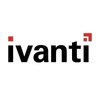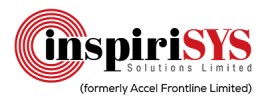Filter interviews by
Galore Networks Interview Questions and Answers
Galore Networks Interview Experiences
2 interviews found
I applied via Naukri.com and was interviewed in Jun 2020. There were 3 interview rounds.
Interview Questionnaire
4 Questions
- Q1. Can you experience networking device installation
- Ans.
Yes, I have experience in networking device installation.
I have installed routers, switches, and firewalls in various network setups.
I am familiar with configuring network devices for optimal performance.
I have troubleshooted network issues related to device installation.
I have worked with different brands of networking devices such as Cisco, Juniper, and Fortinet.
- Q2. You know p2p technology
- Ans.
Yes, I know p2p technology.
P2P stands for peer-to-peer technology.
It is a decentralized network where each node acts as both a client and a server.
P2P technology is commonly used for file sharing, such as BitTorrent.
It can also be used for communication, such as Skype and Zoom.
P2P technology has advantages such as increased speed and reliability.
However, it can also have security risks and be used for illegal activitie
- Q3. Can you interested field work
- Ans.
Yes, I am interested in field work as it allows me to apply my technical skills in real-world scenarios.
I enjoy hands-on problem solving
I like working in different environments
I am comfortable with traveling to different locations for work
- Q4. You ready for climbing on towers
- Ans.
Yes, I am ready for climbing on towers.
I have experience climbing towers in previous roles.
I am physically fit and have no fear of heights.
I am familiar with safety protocols and equipment used for tower climbing.
I am comfortable working at heights for extended periods of time.
I understand the risks involved and am prepared to take necessary precautions.
Interview Preparation Tips
Skills evaluated in this interview
Technical Engineer Interview Questions asked at other Companies
I applied via Naukri.com and was interviewed in May 2022. There were 2 interview rounds.

Any questions related to rf device ..
Interview Preparation Tips
RF Engineer Interview Questions asked at other Companies
Top trending discussions






Interview questions from similar companies

I applied via Recruitment Consultant and was interviewed before Oct 2020. There were 3 interview rounds.
Interview Questionnaire
1 Question
- Q1. Python file handling, input,output, in a file, Sql joins, list sort in python, basics of GIS, Web service how to test
Interview Preparation Tips

Software Engineer Interview Questions & Answers
American Megatrendsposted on 6 Nov 2015
Interview Preparation Tips
Experience: Only 24 people from my campus attended the placement process of this company.The experience wasn't really good.I wasn't
short-listed for next round as my CGPA was 7.5 and need was of above 7.5 ,as they were maintaining standards.
Round: Test
Experience: 1.C aps was really tough.
2.Section 2 we had to choose either Microprocessor or Java,I preferred microprocessor . 3.Simple Questions on 8085 and 8086 instruction set was asked.
4.How much memory are there are 20 address lines,
5.Difference between SRAM and DRAM.
6.ROM is used for stack or not.
7.What are contents of Stack Pointer after PUSH and POP operation.
8.What happens after RET instruction?
9.What is CMC equivalent instruction?
Round: Test
Experience: 16 questions on Quant which are :-
Odd number in a series, Area and Volume, Games of Skill, Time and Work, Average, Trains, Boats
and Streams, Profit and Gain were asked.
If no. of handshakes is 66,find total number of People.?
A lotus in a pond doubles in size everyday,if it fills the pond on 20th day,when will be the pond would be half?
LOGICAL REASONING-
4 men are on the side of a bridge.One torch light is with them and without it they cannot cross
the bridge.The bridge can withstand only 2 people at a time.The time required by the persons are 1
min,2 mins,7 mins,10 mins respectively.Find the shortest time required by all of em to cross the
bridge.
(Answer: 17 minutes)
Round: SOFT SKILLS
Experience: scenario based questions were asked:-
1.working on a project in your company and your brother is in urgent need of a project.What will you do?
2.Your friend mails the project details to some other company.what will be you reaction?
3.Your boss allows to take your team members for a treat.Whether you choose costly one or within budget?
4.Your favorite subject in your curriculum and Why?
5.Where you would view yourself in 5 years?
6.What is a dream company in your terms?
7.Any situation were your work was criticized and what was your reaction?
Skills:
College Name: Anna University Chennai

I applied via Campus Placement and was interviewed before Sep 2021. There were 2 interview rounds.

Mcqs on javascript,. 1 coding question
Interview Preparation Tips
1 online coding
2 technical rounds DSA
1 tech managerial
1 hr
Os, DBMS, DSA, stacks, trees,

Topics:
Python, Django, MySQL, Automation, Technical questions
(3 Questions)
- Q1. Topics: Python, Django, MySQL, Automation, Technical questions
- Q2. Explain Django Architecture
- Ans.
Django follows Model-View-Controller (MVC) architectural pattern.
Django has a high-level architecture that follows the Model-View-Controller (MVC) architectural pattern.
The Model layer represents the database schema and business logic.
The View layer is responsible for rendering the templates and presenting the data to the user.
The Controller layer handles the user's input and interacts with the Model and View layers.
Dj...
- Q3. Difference between XML and JSON
- Ans.
XML is a markup language while JSON is a lightweight data interchange format.
XML uses tags to define elements while JSON uses key-value pairs.
XML is more verbose and complex than JSON.
JSON is easier to read and parse than XML.
XML supports namespaces and validation while JSON does not.
XML is widely used in web services and document exchange while JSON is preferred for data exchange between applications.
Interview Preparation Tips
Showcase your skills
Skills evaluated in this interview

I applied via LinkedIn and was interviewed in Mar 2024. There was 1 interview round.
(1 Question)
- Q1. Explain process for SDE
- Ans.
The process for Software Development Engineer involves planning, designing, coding, testing, and deploying software solutions.
Gather requirements from stakeholders
Create a design based on requirements
Write code to implement the design
Test the software for bugs and issues
Deploy the software for users to use
Iterate on feedback and make improvements
Skills evaluated in this interview

I applied via Referral and was interviewed before Oct 2023. There was 1 interview round.
(4 Questions)
- Q1. About ourselves
- Q2. Professional experience
- Q3. Salary expectation
- Q4. Notice period, if experienced


(2 Questions)
- Q1. What is a pointer to pointer
- Ans.
A pointer to pointer is a variable that stores the memory address of another pointer variable.
It is used to create dynamic data structures like linked lists and trees.
It allows multiple levels of indirection.
It is denoted by ** in C and C++.
Example: int **ptr;
Example: ptr = &p; where p is a pointer variable.
- Q2. Class, object, inheritance, polymorphism,dbms
Interview Preparation Tips
Skills evaluated in this interview

Software Engineer Interview Questions & Answers
Zebra Technologiesposted on 2 Jul 2024
(2 Questions)
- Q1. What are the main principles of the Java
- Ans.
Main principles of Java include object-oriented programming, platform independence, and automatic memory management.
Object-oriented programming: Java is based on classes and objects, allowing for encapsulation, inheritance, and polymorphism.
Platform independence: Java code can run on any platform that has a Java Virtual Machine (JVM) installed.
Automatic memory management: Java uses garbage collection to automatically m
- Q2. What is the different between == and equals method
- Ans.
The == operator compares the memory addresses of two objects, while the equals method compares the content of two objects.
The == operator is used to compare the memory addresses of two objects in Java.
The equals method is used to compare the content of two objects in Java.
Example: String str1 = new String("hello"); String str2 = new String("hello"); str1 == str2 will return false, but str1.equals(str2) will return true
Skills evaluated in this interview
Galore Networks Interview FAQs
Tell us how to improve this page.
Interview Questions for Popular Designations
Interview Questions from Similar Companies
Galore Networks Reviews and Ratings
based on 128 reviews
Rating in categories
|
RF Engineer
33
salaries
| ₹1.5 L/yr - ₹3 L/yr |
|
Network Engineer
17
salaries
| ₹1.7 L/yr - ₹3.2 L/yr |
|
Field Engineer
14
salaries
| ₹1.6 L/yr - ₹2.8 L/yr |
|
HR Executive
6
salaries
| ₹2 L/yr - ₹2.3 L/yr |
|
Network Field Engineer
6
salaries
| ₹1.5 L/yr - ₹2.3 L/yr |

Accel Frontline

Pitney Bowes

DynPro

Apex CoVantage
- Home >
- Interviews >
- Galore Networks Interview Questions









